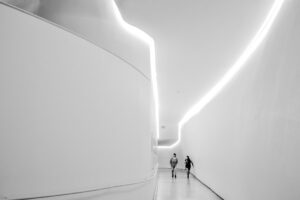Why Outstanding Patient Experience Continues to be the Measure of a Great Hospital / Health System

If you visit any hospital or health system website; look at any hospital brochure or view any advertisement, it is likely to be focused on patient experience or patient satisfaction. These are among of the most common “buzz” words used to promote hospital services to their customers.
If constructed in an easy to understand formula it would read:
- High Quality Patient Care Delivery = Outstanding Patient Experience/ Patient Satisfaction.
Both these terms are commonly used interchangeably. Yet there exists an important difference between the two.
Patient experience occurs at each touch point of patient care from being welcomed into a hospital to being discharged.
A valued patient experience at a hospital includes the following bullet points:
- Easy access to treatment and resources
- Effective communication with medical staff
- Easy access to information
Patient satisfaction, on the other hand, relates to whether a patient’s expectations are being met. Their satisfaction ratings on a survey may also reflect very different outlooks.
Is there an effective measure for patient satisfaction in hospitals?
 Many healthcare organizations view HCAHPS survey as a valid barometer of patient satisfaction. The HCAHPS are also among of the most commonly used surveys in hospitals today
Many healthcare organizations view HCAHPS survey as a valid barometer of patient satisfaction. The HCAHPS are also among of the most commonly used surveys in hospitals today
The original idea behind the HCAHPS survey was to measure patient satisfaction from the patient’s viewpoint. The goal was to produce information that would improve patient safety and increase the provider’s accountability.
However the HCAHPS is not perfect, and does have certain blind spots. As MD William Maples, argues, the HCAHPS does not measure whether a patient feels that they are “listened to” or “genuinely cared for”. Another HCAHPS blind spot is evaluating whether “a care giver who feels trust and mutual respect at work will function at his or her highest level”.
Despite the HCAHPS few imperfections, the HCAHPS “does measure key aspects of care such as pain management, responsiveness of hospital staff, discharge information and so forth.” Yet as Maples argues, the HCAHPS needs to be amended to assess “teamwork, communication, and the connection between patients and caregivers”.
One key aspect of getting patient satisfaction right is implementing a strong culture. Maples recommends the following three key building blocks to developing an outstanding culture:
- Understanding the patient relationship
- Strong team work
- Effective communication
Mobile Healthcare Solutions: Creative ways to increase patient satisfaction
 As part of the value care model, many health systems are employing new cutting edge technology to boost their patient satisfaction scores. One example is the EASE device. This piece of technology enables medical professionals to communicate with greater simplicity and security with patients and their families. They can also exchange texts, videos or photos with families sitting in the OR room or while they are at home.
As part of the value care model, many health systems are employing new cutting edge technology to boost their patient satisfaction scores. One example is the EASE device. This piece of technology enables medical professionals to communicate with greater simplicity and security with patients and their families. They can also exchange texts, videos or photos with families sitting in the OR room or while they are at home.
St Louis Children’s and St Louis Children’s Heart Center have successfully trialed this device. As Dr. Priooz Eghtesady, Pediatric Thoracic and Cardiac Surgeon at St. Louis Children’s Hospital told the St. Louis Post Dispatch, “Patients have no clue what happens in there (the OR room) and it causes a tremendous amount of anxiety”. “The operating room is the only part that is not visible”. One of the patients’ parents, Bryan Noblitt, told the St Louis Post Dispatch, “Being able to know what’s going on and being able to see is definitely helpful”.
Findings from a current Jamf survey emphasize the positive effect of using technology like the EASE device. Vansom Bourne, who conducted the survey for Jamf (in which 600 health IT professionals from the US and Europe participated), found “96 percent of organizations currently implementing mobile health technology has seen a positive impact on their patient satisfaction measures”. 47% reported that they wanted to increase their use of digital health solutions in the next two years. “32% of those respondents said they observed a “significant” patient satisfaction increase…”
The hospital environment and patient satisfaction
Implementing secure technology solutions is certainly an effective tool for patient experience. Yet there are other facets to patient experience that are just as important.
 In a report cited in The Wall Street Journal, one of the largest NYC based Systems, Mount Sinai Health System, is conducting research on “whether brighter lights in cancer patients’ rooms during the morning can boost their mood and help sleep through the night”.
In a report cited in The Wall Street Journal, one of the largest NYC based Systems, Mount Sinai Health System, is conducting research on “whether brighter lights in cancer patients’ rooms during the morning can boost their mood and help sleep through the night”.
The experiment tested two conditions: either providing faint light or “circadian-stimulating high-intensity light”. The hypothesis is that strong light will affect circadian rhythms, which improves sleep quality. This also impacts on the rates of both depression and fatigue.
44 patients have so far participated in the research, half being exposed to intense light in the morning and the other 22 being subjected to the dim light condition. The results have been inconclusive as far as sleep being affected. However, promising results showed that there was a correlation between dim light and depression.
“Around 40 percent of the participants were clinically depressed after the first week in the hospital”. “That percentage remained constant for those who underwent light therapy, but increased to 70 percent among patients in the dimmer “placebo” light. “
In conclusion, patient experience will always be the measure of quality care. Today, many more hospitals are adopting a value based model and are under pressure to implement the latest technologies and treatments. Yet patient experience is multi-faceted and building a culture with cohesive team work is also an important factor. Another aspect to consider is the way patients’ rooms are designed to ensure more light within a positive healing environment.
To stay up-to-date with the latest trends and innovation in healthcare technology, be sure to follow Merraine Groups blog. https://www.merraine.com/blog/
By: Jonathan Gordon
